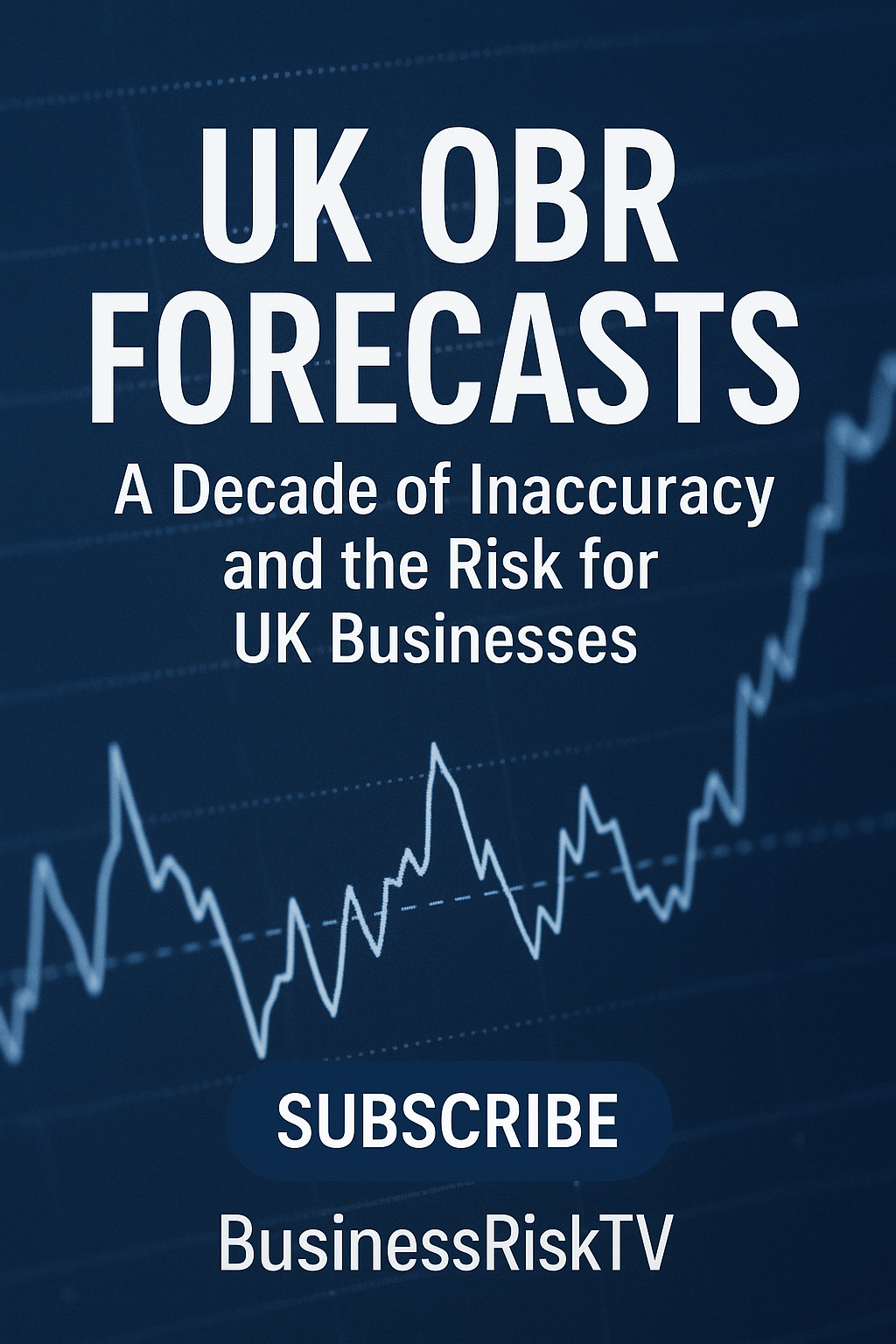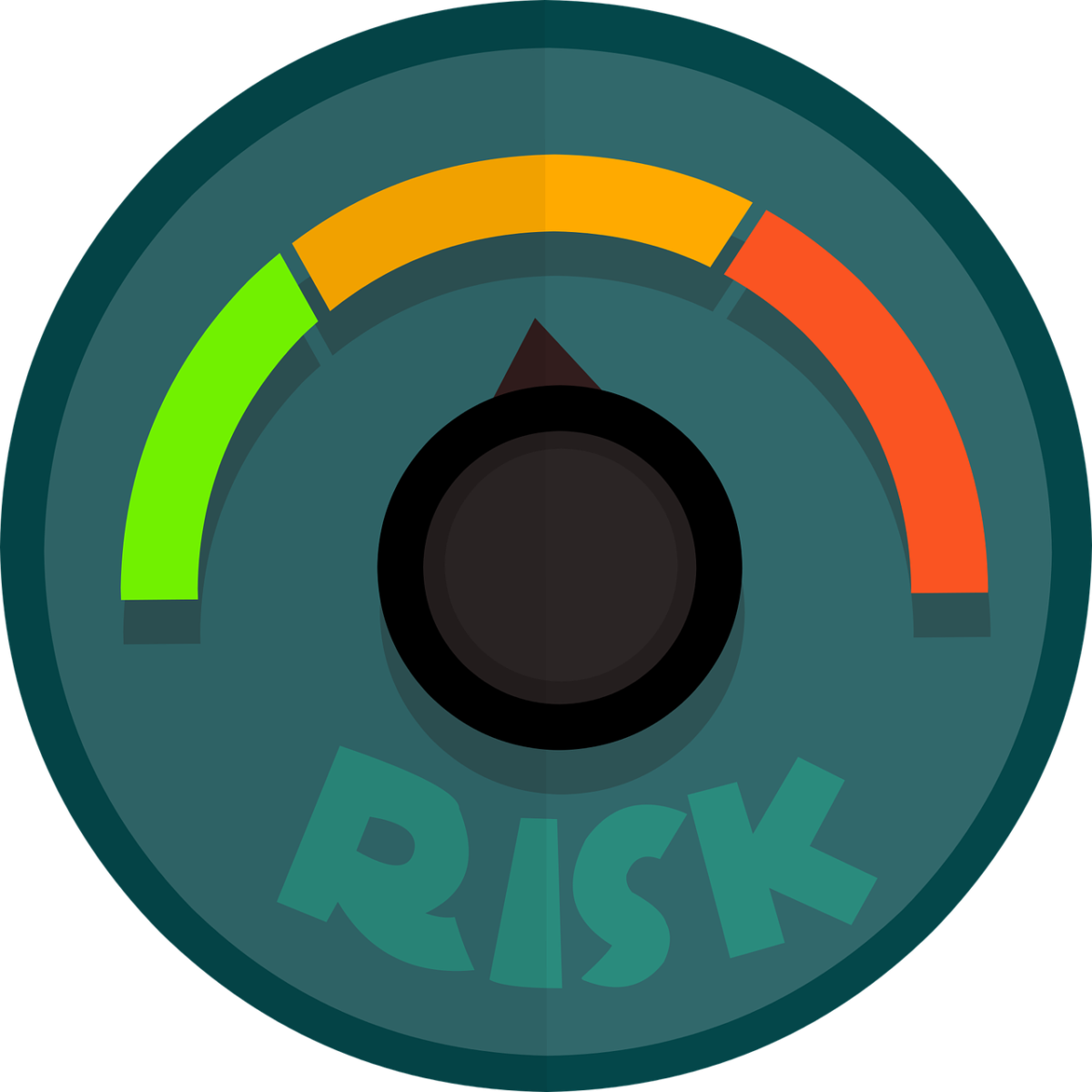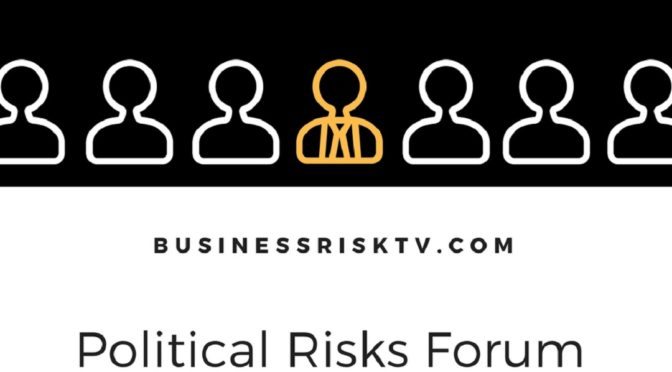UK OBR Forecasts: A Decade of Inaccuracy and the Risk for UK Businesses
The UK Office for Budget Responsibility (OBR) has been criticised for its economic forecasts over the last 10 years, which have often been inaccurate. While it has performed better than the Treasury did before its creation, it has persistently overestimated productivity growth, a key factor in its forecasts. This inaccuracy is a significant concern because UK economic policy, particularly the government’s fiscal rules, is heavily tied to the OBR’s projections.
Accuracy of OBR Forecasts
The OBR was established in 2010 to provide independent and credible economic and fiscal forecasts, preventing the political manipulation that was common when the Treasury produced its own projections. While the OBR has been praised by institutions like the International Monetary Fund (IMF) and is considered a successful innovation, its forecasts have been far from perfect. The OBR itself acknowledges that the difference between its forecasts and actual economic outcomes can be significant, especially during periods of economic turbulence.
A major and consistent issue is the OBR’s over-optimistic forecast for productivity growth. This persistent overestimation has a cascading effect on other economic projections. Lower-than-expected productivity means slower wage growth, reduced tax revenues from income and corporation tax, and weaker household spending, which in turn reduces VAT receipts. These factors make it harder for the government to meet its fiscal targets without raising taxes or cutting spending.
The OBR’s Influence on UK Economic Policy
UK economic policy is heavily tied to OBR projections for a few key reasons:
- Fiscal Rules: The government sets fiscal rules, such as targets for debt and borrowing, which are judged against the OBR’s forecasts. The OBR’s verdict on whether these rules are being met becomes the primary driver of the Chancellor’s Budget and fiscal decisions. This creates a system where a small change in the OBR’s forecast, often called “fiscal headroom,” can lead to significant and often rushed policy adjustments.
- Credibility: The OBR’s independence is crucial for maintaining the UK’s financial credibility in the eyes of international investors and markets. The infamous “mini-budget” of 2022, which was not accompanied by an OBR forecast, led to a sharp drop in the pound and a rise in government borrowing costs. This event underscored the importance of the OBR’s role in providing market reassurance and preventing politically motivated “wishful thinking” from undermining economic stability.
Alternatives to the OBR’s Dominance
Ditching the OBR’s power over UK economic policy would be a high-risk move, but alternatives could include a more flexible or multi-faceted approach to fiscal policy.
- Diverse Forecasting Sources: The government could rely on a broader range of economic forecasts from institutions like the Bank of England (BoE), the Institute for Fiscal Studies (IFS), and private sector consultancies. This would provide a more balanced view and reduce the over-reliance on a single body’s projections.
- Reform of Fiscal Rules: A more desirable alternative might be to reform the fiscal framework itself. The current system, which focuses on a narrow “fiscal space” against a single forecast, leads to frequent and disruptive policy changes. A new framework could focus on a longer-term strategy, such as a medium-term program for fiscal consolidation, rather than a narrow-minded adherence to a specific debt target at a single point in time.
Business Risk Management Strategies
Business leaders in the UK can’t control the OBR’s forecasts, but they can adapt their risk management strategies to mitigate the impact of inaccurate projections and subsequent policy volatility.
- Embrace Scenario Planning: Don’t rely on a single economic forecast. Develop and analyse a range of best-case, worst-case, and most-likely scenarios for economic growth, inflation, and interest rates. This allows for a more resilient strategy that can adapt to different economic realities.
- Focus on Internal Data: Prioritise your own company’s data and market analysis over public economic forecasts. Monitor your customers, supply chains, and workforce closely. This provides a more accurate picture of the direct risks and opportunities facing your business.
- Diversify and Build Resilience: Reduce your reliance on a single market, product, or supplier. A diversified business model, a strong balance sheet, and a resilient supply chain will help you withstand external shocks, regardless of what the OBR is forecasting.
- Engage with Policy: Stay informed about potential government policy changes driven by the OBR’s forecasts. Engage with trade associations and professional bodies to have a voice in shaping policy and to anticipate regulatory shifts that could impact your business.
- Strengthen Financial Controls: Given the potential for unexpected tax increases or spending cuts, maintain a robust financial management system. This includes managing cash flow, hedging against currency fluctuations, and securing credit lines to provide a buffer against economic volatility.
- Invest in Agility: Foster a culture of agility and rapid response within your organisation. This allows you to quickly pivot your strategy, adjust pricing, or change operational models in response to sudden policy changes or economic shifts. This proactive approach minimises the time lag between an external shock and your company’s response.
#BusinessRisk #UKEconomy #RiskManagement #BusinessRiskTV
Get help to protect and grow your business faster with BusinessRiskTV
Find out more about protecting and growing your business
Subscribe for free business risk management ideas risk reviews and cost reduction tips
Connect with us for free business risk management tips
The Problem with Over-Optimistic OBR Predictions
The Office for Budget Responsibility (OBR) has a track record of being overly optimistic in its economic forecasts, particularly concerning a few key metrics. This persistent overestimation isn’t a minor issue; it has a significant knock-on effect on the government’s fiscal decisions and, by extension, the entire UK economy.
The most glaring and consistent error is the overestimation of productivity growth. Productivity, defined as the output per hour worked, is the fundamental driver of long-term economic growth. When the OBR predicts that productivity will rise faster than it actually does, it creates a cascade of false expectations.
Here’s how this over-optimism creates a problem:
- Inflated Tax Revenue Projections: Higher productivity is expected to lead to higher wages and company profits. The OBR’s models, therefore, forecast larger tax receipts from income tax, corporation tax, and National Insurance. When productivity growth falls short, these tax revenues also underperform, creating a fiscal black hole.
- Misleading “Fiscal Headroom”: The difference between the government’s borrowing target and the OBR’s forecast for borrowing is known as “fiscal headroom.” When the OBR is overly optimistic, this headroom appears larger than it is in reality. This can tempt Chancellors to make unfunded spending pledges or tax cuts, only to discover later that the money isn’t there, forcing a difficult U-turn or a “mini-budget” style crisis.
- Policy Instability: The OBR’s forecasts are a major input for government fiscal rules. When these forecasts prove inaccurate, it leads to a cycle of constant policy adjustments. This creates an unstable and unpredictable economic environment for businesses, making long-term planning difficult and discouraging investment.
Why UK Economic Policy is Trapped by OBR Projections
The OBR was created in 2010 to depoliticise economic forecasting and provide independent, credible analysis for the government. In many ways, it has succeeded, preventing the return to a system where the Treasury could be accused of creating politically convenient, but unrealistic, numbers. However, this success has created an almost unbreakable link between the OBR’s forecasts and the government’s fiscal policy.
This dependency is best understood through the UK’s system of fiscal rules. Governments set themselves targets for debt and borrowing, and these targets are formally judged against the OBR’s forecasts. The OBR’s assessment of whether a government is “on track” to meet its own rules becomes the single most important factor shaping fiscal policy.
Here’s why this creates a trap:
- The “Fiscal Headroom” Squeeze: Chancellors of the Exchequer are in a constant battle to meet their fiscal targets, often by a razor-thin margin. The OBR’s forecasts for the economy—especially for productivity and growth—determine how much “fiscal headroom” (the buffer between current policy and the fiscal rules) the government has. A minor downgrade in the OBR’s forecast, often costing just a few billion pounds, can be enough to wipe out this headroom, forcing the Chancellor to scramble for new tax rises or spending cuts to stay compliant.
- A Focus on the Short Term: The cycle of semi-annual OBR forecasts encourages a short-term, reactive approach to policymaking. Instead of developing a long-term, strategic vision for the economy, the government’s focus is on making the numbers “add up” for the next OBR report. This can lead to rushed, poorly thought-out decisions that prioritize meeting a forecast over sound long-term economic planning.
- The Political Consequences of Defiance: The 2022 “mini-budget” provides a stark example of what happens when a government tries to sidestep the OBR. The lack of an independent forecast to accompany the radical tax-cutting agenda spooked financial markets, leading to a collapse in the pound and a sharp rise in government borrowing costs. This event cemented the OBR’s power, showing that its credibility is crucial for maintaining market confidence.
Ultimately, while the OBR provides a valuable service by preventing political manipulation, its central role in the fiscal framework makes the UK economy highly vulnerable to its forecasts. Businesses and individuals are left to navigate the consequences of a system where a single set of numbers can dictate major policy changes, from tax hikes to cuts in public services.
Alternatives to the OBR: A New Path for UK Fiscal Policy?
The UK’s reliance on the OBR’s single set of forecasts for its fiscal rules has created a system that is brittle and prone to sudden, reactive policy changes. Many economists and think tanks, including the Institute for Government and the New Economics Foundation, argue that a more robust and flexible framework is needed. This would not mean getting rid of the OBR entirely, but rather changing its role and the rules it judges the government against.
Instead of the current system, a new path could include:
- A “Strategy-First” Approach: The government would first articulate its long-term fiscal strategy, outlining its objectives for spending, taxation, and debt over a 10- or 20-year horizon. The OBR’s role would then shift from simply validating the numbers to providing an independent assessment of whether the government’s policies are consistent with that stated strategy. This would encourage a focus on the bigger picture rather than short-term compliance.
- Multiple Forecasts and Broader Scrutiny: The government could be required to publish its own internal forecasts alongside the OBR’s. Additionally, a new, independent body—perhaps a “Fiscal Policy Committee” similar to the Monetary Policy Committee at the Bank of England—could be introduced. This committee would review both the Treasury’s and the OBR’s forecasts, fostering a more open debate and allowing for a greater degree of professional judgment.
- Reforming the Fiscal Rules Themselves: The rules could be made more flexible to account for economic shocks. For example, rather than a rigid target for debt to fall in a specific year, the rules could focus on a rolling, long-term trend. This would give the government more breathing room to respond to a recession or other unexpected events without being forced into immediate, and potentially damaging, tax hikes or spending cuts. Another alternative is to move beyond just targeting debt and borrowing and instead focus on a broader measure of the government’s balance sheet, including public sector assets.
These alternatives aim to replace the current system’s reliance on a single, fallible forecast with a framework that is more resilient, transparent, and focused on genuine long-term fiscal sustainability.
Read more free business risk management articles and view videos
Connect with us for free new business risk management alerts
Six Ways to OBR-Proof Your Business Risk Management
The unpredictability of UK economic policy, largely driven by the OBR’s frequently inaccurate forecasts, is a strategic risk that business leaders cannot ignore. While you can’t control the government’s fiscal decisions, you can build a more resilient and adaptable business model that is less vulnerable to these external shocks. Here are six actionable ways to OBR-proof your risk management strategy:
- Embrace Scenario Planning, Not Single Forecasts: Ditch the habit of basing your entire business plan on a single, optimistic economic forecast. Instead, develop a range of plausible scenarios. What happens if the OBR cuts its productivity forecast? What if inflation stays stubbornly high, forcing the Bank of England to keep interest rates elevated? Create financial models for best-case, worst-case, and most-likely scenarios, and have clear contingency plans for each. This allows you to react quickly and confidently when the economic winds shift.
- Focus on Your Own Data as the “Truth”: Public economic data can be noisy and subject to revision. While it provides context, the most reliable information for your business is your own data. Prioritise your internal metrics: customer buying habits, sales trends, inventory turnover, and supply chain performance. Use this real-time, granular data to make strategic decisions rather than waiting for the next OBR report. This internal focus makes your business more agile and responsive to the realities on the ground.
- Build Financial Buffers and Flexible Budgets: In an environment of potential fiscal instability, cash is king. Maintain healthy cash reserves and establish strong relationships with banks to secure flexible lines of credit. Move away from rigid annual budgets towards a system of rolling forecasts that are reviewed and updated on a monthly or quarterly basis. This flexibility allows you to adjust spending, investment, and hiring plans in response to the latest economic signals, rather than being locked into an outdated plan.
- Strengthen and Diversify Your Supply Chain: A single, fragile supply chain is a significant vulnerability. OBR-driven policy shifts can lead to unexpected tariffs, regulatory changes, or even a sudden drop in domestic demand that impacts your suppliers. Actively work to diversify your suppliers, both geographically and in terms of the companies you work with. Building multiple supplier relationships and having contingency plans in place can insulate your operations from external shocks.
- Invest in Agility and Cross-Training: The ability to pivot your business model is a critical form of resilience. Invest in technology and employee training that allows your workforce to be more flexible and adaptable. Cross-training employees to perform multiple roles, embracing automation for routine tasks, and having a clear communication plan for times of crisis can help your business respond effectively to sudden changes in consumer demand or government regulation.
- Actively Engage with Policy and External Expertise: While you can’t control policy, you can be better prepared for it. Stay informed about the government’s fiscal plans and the OBR’s commentary. Join trade associations or professional bodies that have a voice in shaping policy. Consider working with external strategic advisors who can provide an objective, expert perspective on the risks and opportunities presented by the UK’s economic and political landscape. This proactive engagement can help you anticipate regulatory changes and position your business to thrive in a volatile environment
UK OBR Forecasts: A Decade of Inaccuracy and the Risk for UK Businesses


